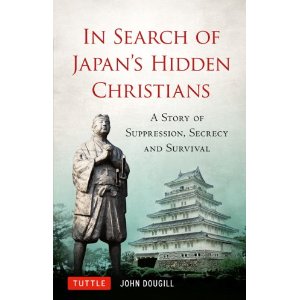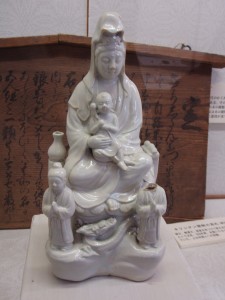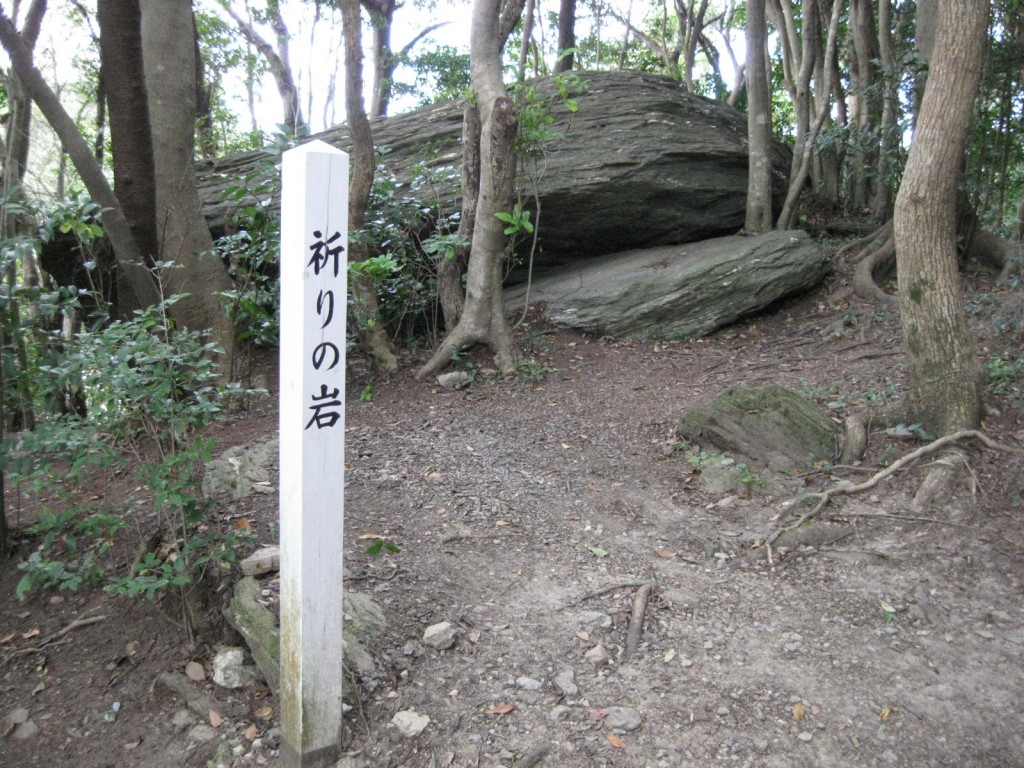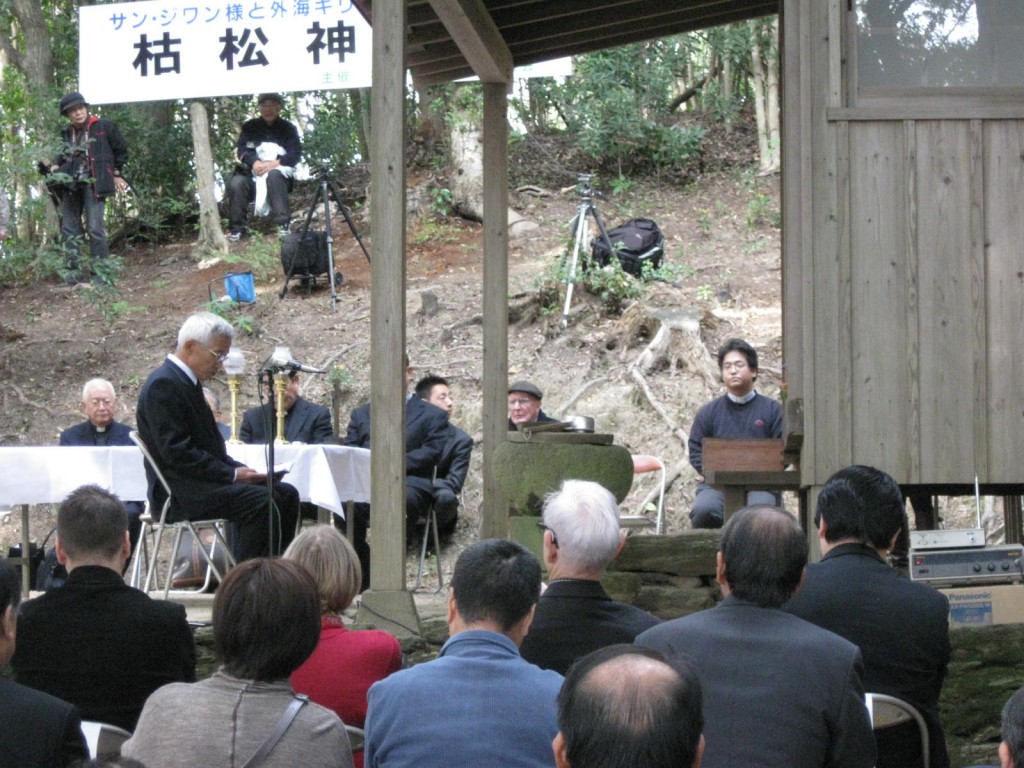
Today is the official launch of my new book, In Search of Japan’s Hidden Christians (Tuttle). In celebration I thought I’d write something of the Shinto connection. Some may be surprised to find that there is one, because the Hidden Christians are usually linked with Buddhism. They not only worshipped the Maria Kannon, but had to register with a Buddhist temple in accordance with Tokugawa law. They underwent Buddhist funerals too.
But first of all, what are Hidden Christians? In 1614 Christianity was banned, out of fear that Catholicism would subvert the power of the shogun. It’s been estimated that by that time the European missionaries had managed over 300,000 converts. Torture and executions were used to eradicate the faith, and the policy of isolationism after 1639 was partly implemented with the same intent. By mid-century it was thought that not a single Christian remained.

Maria Kannon, symbol of the Hidden Christians. Kannon to the outside world, but Maria to believers.
In 1854 Japan was prised open by Perry’s Black Ships, and eleven years later came an astonishing revelation: groups of villagers, mostly illiterate, had continued to practice Christianity in secret despite all the preventative measures put in place. For seven generations they had passed the religion down to their children despite having no Bible, no priests, and no sacraments except for baptism. Isolated and imperiled, they clung to their faith, and the result was often unorthodox.
Remarkably, even after the toleration of Christianity in 1873, about half of the 60.000 Hidden Christians refused to join the Catholic Church. Instead they preferred to carry on with the rituals and prayers taught to them as children. Some of their descendants still do.
Shinto influences
In ‘camouflaging’ their religion, the Hidden Christians used many practices associated with Shinto. Obvious examples would be their use of shrines as cover for their prayers. The most famous instance is Karematsu Jinja at Sotome, where a Christian martyr called San Jiwan is buried. It’s the area in which Endo Shusaku chose to set his novel on Hidden Christians, Silence (1966). Martin Scorsese was there a couple of years ago preparing for the adaptation of Endo’s novel, which is due to start shooting later this year.

Sacred rock where villagers pretended to be offering Shinto prayers, but were in fact venerating the martyr San Jiwan
To avoid suspicion, veneration of San Jiwan was camouflaged as worship of a kami. It made good sense, since the hill is of the wooded type often celebrated in Shinto. Even in modern times, when the need for subterfuge had long passed, the honoring of San Jiwan continued in Shinto style as if entirely natural.
Until the 1930s there was a small shrine (hokora), where soldiers going off to war would pay respects, then in the late 1930s a building was erected (which was reconstructed in 2002). It is a rare instance of a Shinto-style shrine with no torii. Inside are pieces of the original pine trees, and a grave with an inscription to San Jiwan, pappa confesoru—a faux Latin tribute to the priest-confessor.

A present-day "Hidden Christian" reading orashio (prayers) at an interfaith ceremony at Karematsu in 2010. The prayers were handed down orally for seven generations and in many cases the original wording was badly corrupted as a result.

Now this sounds like one definitely interesting read. Happy to hear that Tuttle is still well and alive.
thanks… Tuttle have indeed managed to survive the storm, and unlike some they still believe in quality publishing….
“Hidden Christians (Part One) | Green Shinto” truly makes
me contemplate a small bit more. I really cherished each and every individual element of it.
Thanks ,Veronica
Is Sotome on the peninsular to the NW of Nagasaki? I know there’s been a campaign to have a number of the churches in the area corporately recognized as a World Heritage site, but the sad fact of the matter is that there are none with an existing edifice that predates around 100 years old. It is only perhaps the odd secret icon and the earth itself and the older graves that preserve any sort of physical record. Correct me if I am wrong. Belated congratulations on the book!
Hi Stephen… I would say you’re not entirely wrong, because the severity of the persecution meant that the Hidden Christians wished not to have any physical evidence of their activities. On the other hand, there are plenty of places that recall their activities, and they are very poignant even for a non-Christian. At Karematsu Jinja, for instance (and yes it is just north-west of Nagasaki), there’s a prayer rock where the Hidden Christians knelt to pray. Not far away is the site of Bastian’s hut, where a Hidden Christian hid out in the woods. On Itsuki there’s a hiding place where some Hidden Christians were rounded up, and a memorial shrine built on the site of a massacre of Christians. So there are plenty of physical places that speak to the nature of the persecution and the belief of the Hidden Christians… The Nagasaki region was in line to apply for W.H. status next year, but for some reason the application has been postponed. Not sure why….